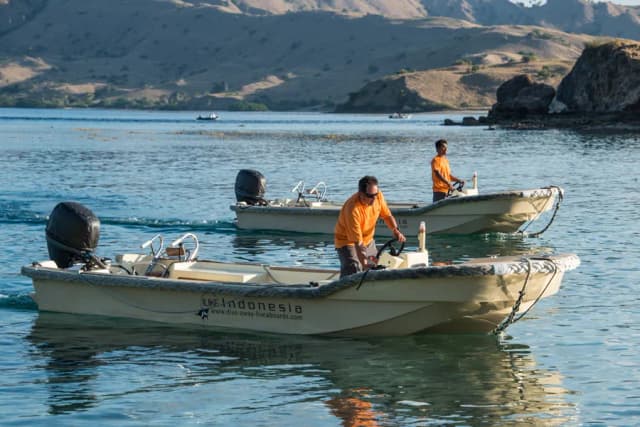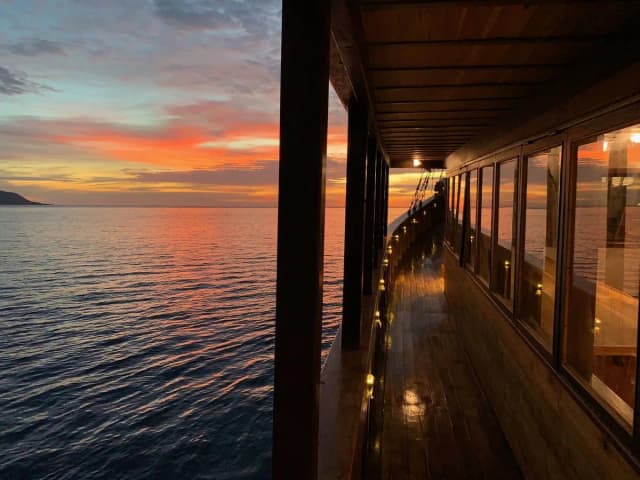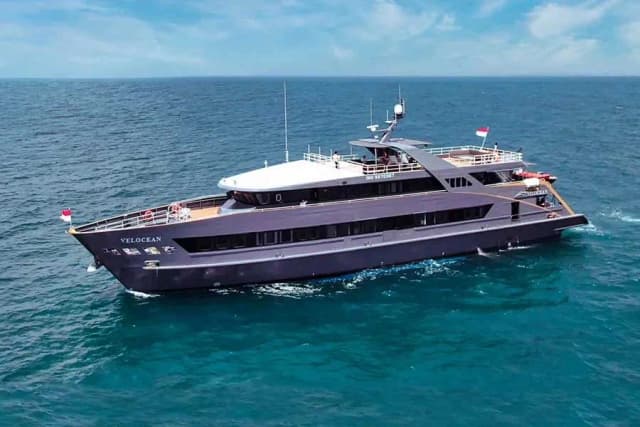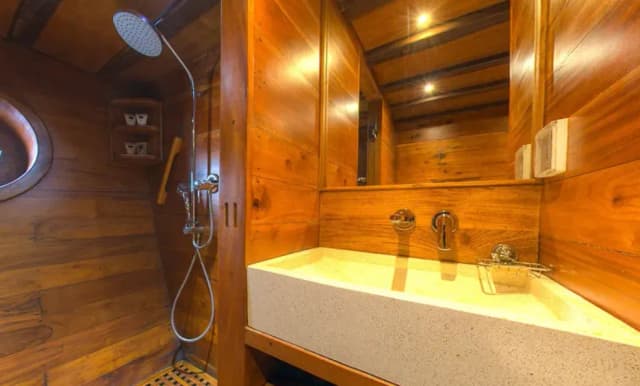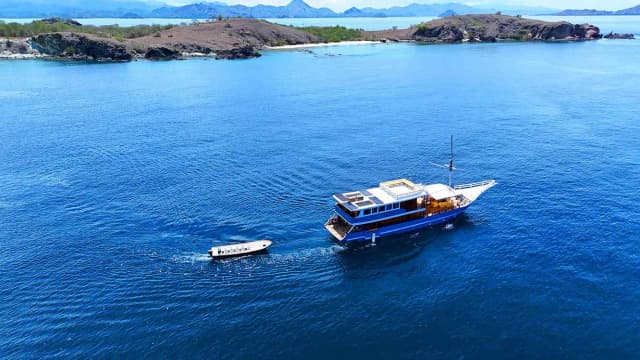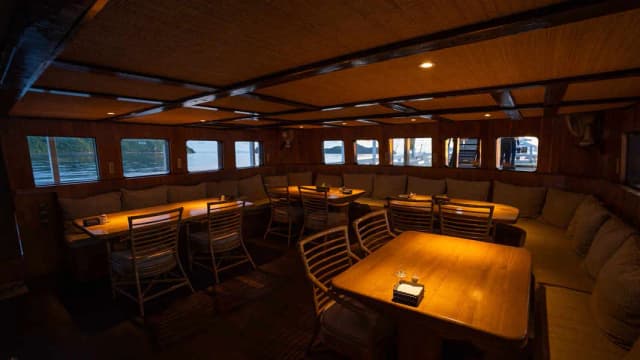Seven Seas
Seven Seas is a luxurious Indonesian liveaboard offering world-class diving in Komodo, Raja Ampat, and beyond, with spacious cabins, expert guides, and top-notch amenities.
Trip dates, price & live availability
Cabins
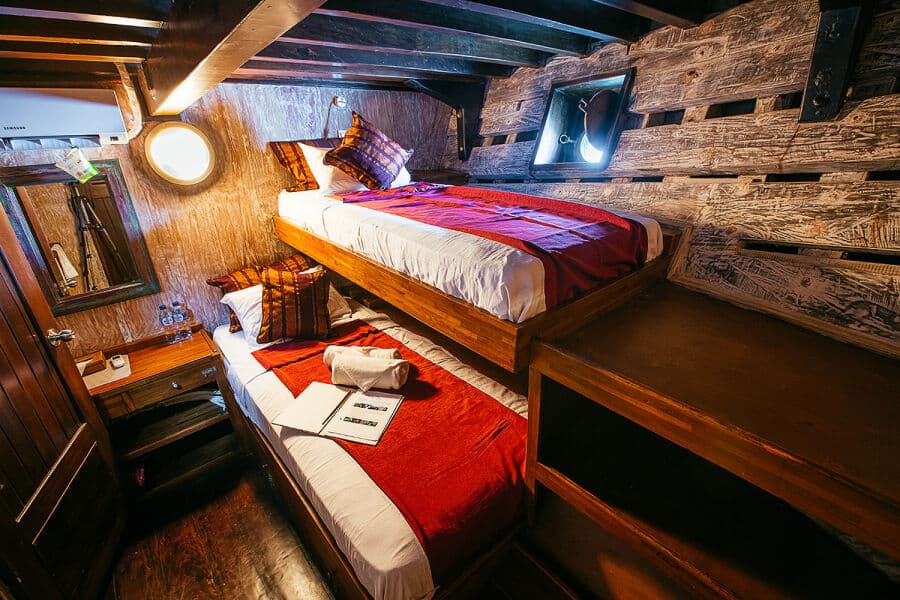
Single Bunks Cabin 1 & 2 Lower Deck
Air Conditioning (AC)
Fan Ventilator
TV
Wifi
Toilet
Shower
Bathtub
Hair Dryer
Safe
Refrigerator
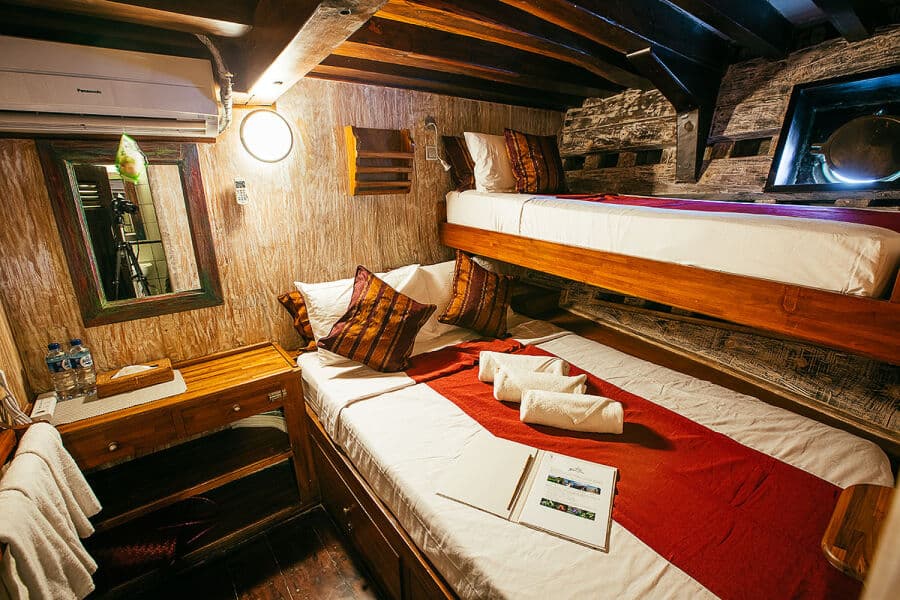
Double / Twin Cabin 3 & 4 Lower Deck
Air Conditioning (AC)
Fan Ventilator
TV
Wifi
Toilet
Shower
Bathtub
Hair Dryer
Safe
Refrigerator
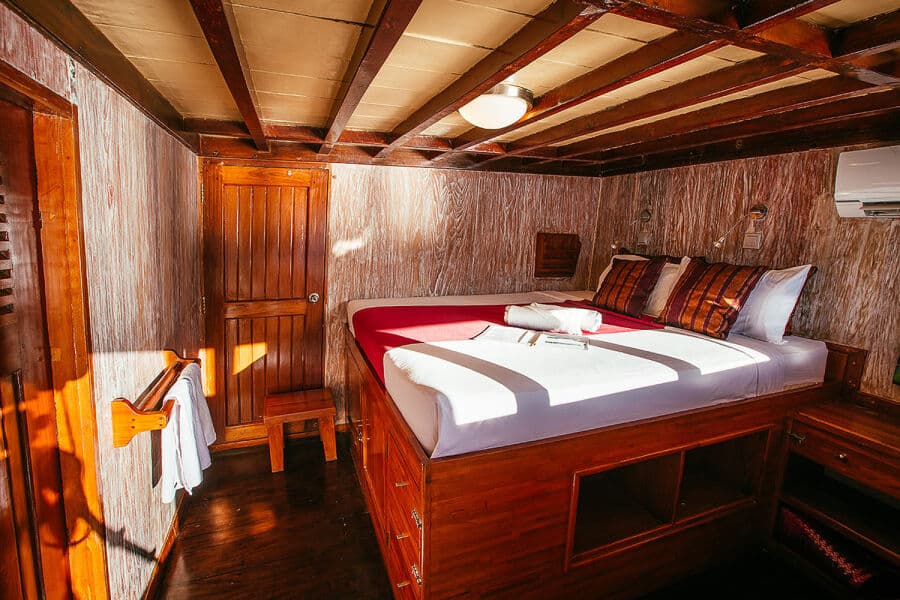
Cabin 7 & 9 - Double only Upper Deck
Air Conditioning (AC)
Fan Ventilator
TV
Wifi
Toilet
Shower
Bathtub
Hair Dryer
Safe
Refrigerator
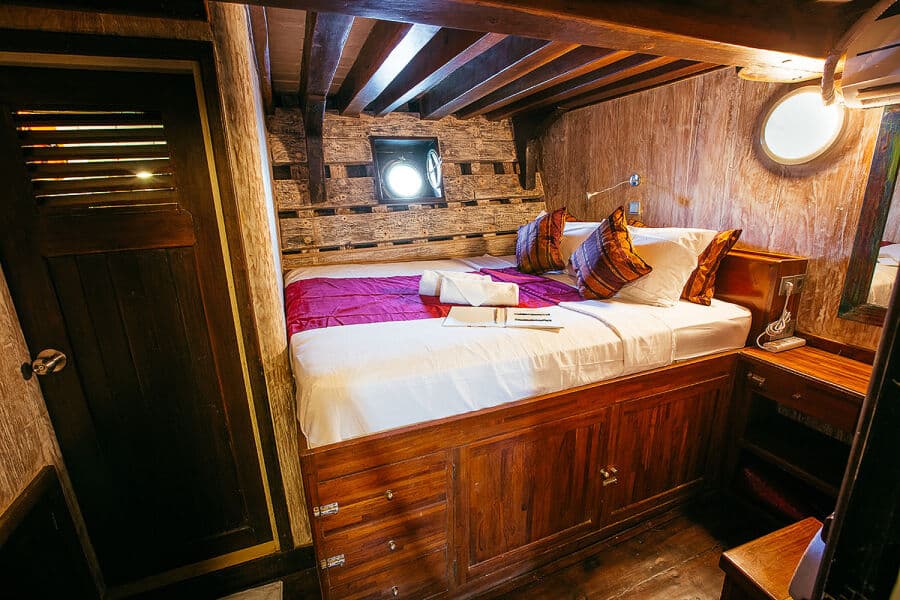
Cabin 5 & 6 - Double only Lower Deck
Air Conditioning (AC)
Fan Ventilator
TV
Wifi
Toilet
Shower
Bathtub
Hair Dryer
Safe
Refrigerator
Deck plan
Features & facilities
Boat features & facilities
Large sun deck
Shaded outdoor lounge area
Sundeck at the rear with comfortable day beds
Air-conditioned lounge and dining area
Working table for camera preparations and editing
DVD, radio, books, toys
Galley with state-of-the-art facilities
Emergency escape hatch
Dry storage
6 double sea kayaks
Dive features & facilities
Shaded dive deck with deck showers and dive gear storage
Multiple compressors
Fully equipped dive shops
Comfortable speedboats
First-rate dive guides
Location
Excursions originate in various areas depending on itinerary.
Dive Overview
Indonesia is a diving gem, featuring volcanic geography, wrecks, and vibrant marine life. The Seven Seas boasts knowledgeable staff and top-notch equipment so guests can make the most of their dive vacations.
[See: Komodo Dive Travel Guide, Raja Ampat Dive Travel Guide, Wakatobi Dive Travel Guide, & Alor Dive Travel Guide]
Accommodation Overview
Cabin 1 & 5
Cabin 6 & 9
The Seven Seas accommodates up to 16 passengers in 8 staterooms with air-conditioning & warm-water en-suite bathrooms as follows:
- 4 rooms with royal size double beds
- 2 rooms with large single beds in bunk style
- 2 rooms with small double and large single beds in bunk style
Dining Area & Lounging Area
Front Deck Lounge & Kayaks on Roof
Food & Drinks
- With many years culinary expertise, the chef prepares truly mouth-watering cuisine. Buffets form the main menu of the day so that we can give you a wider choice and suit the majority of taste buds, including vegetarians. The chef uses as much fresh local produce as she can, including fresh seafood.
- The bar has a selection of alcoholic and non-alcoholic drinks. Water, tea and freshly brewed coffee from our espresso machine are included and you can enjoy as much as you like. All drinks will be tallied and you will receive the bill at the end of your trip.
More information
Practical information
Time Zone
UTC+8 & UTC+9
Local Currency
IDR (Indonesian Rupiah)
Language
English & Indonesian
Local Currency
cash (US Dollar, Euro, Australian Dollar or Rupiah) or credit card (Visa or Mastercard)
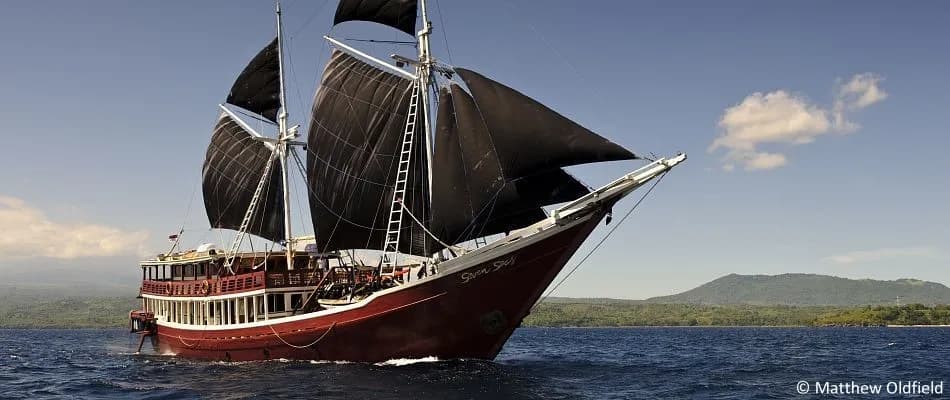
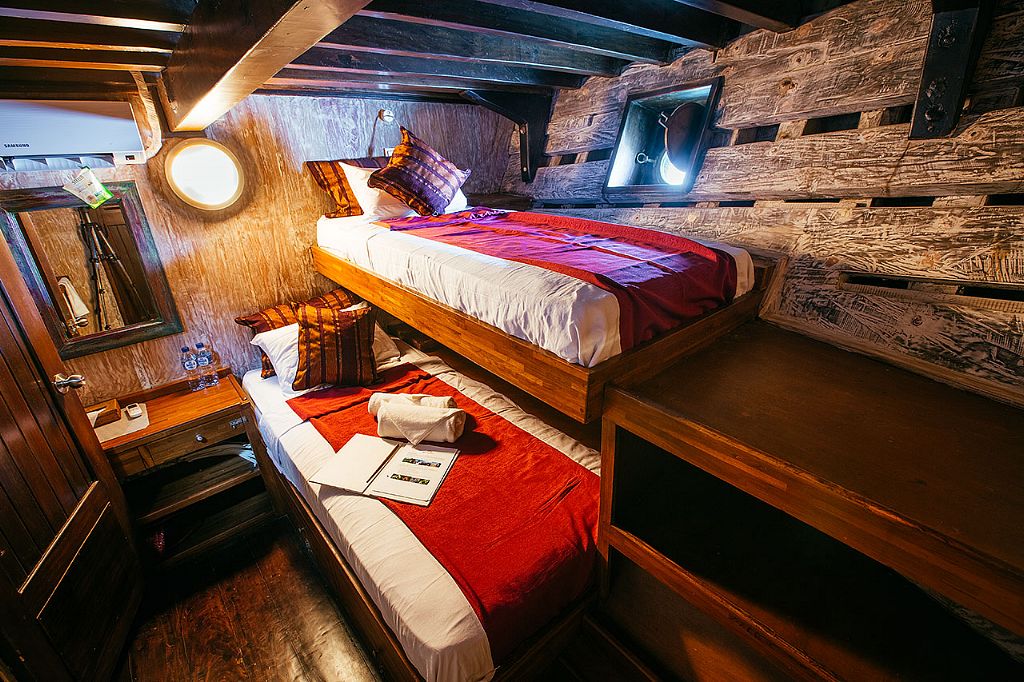
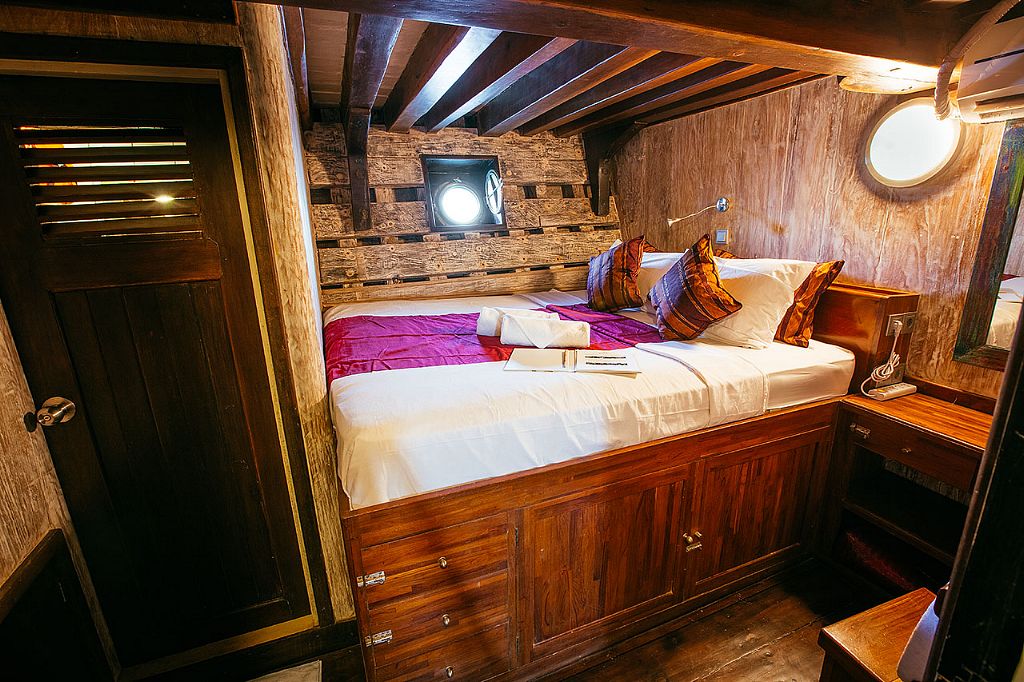
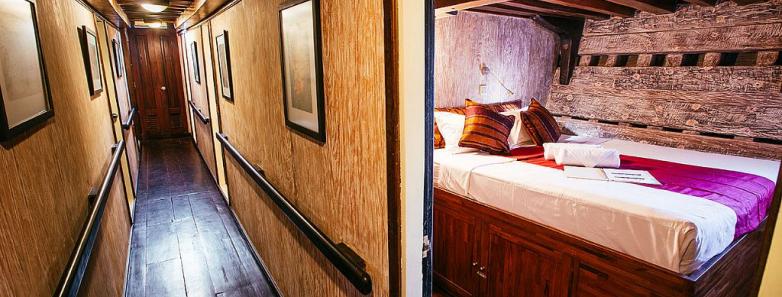
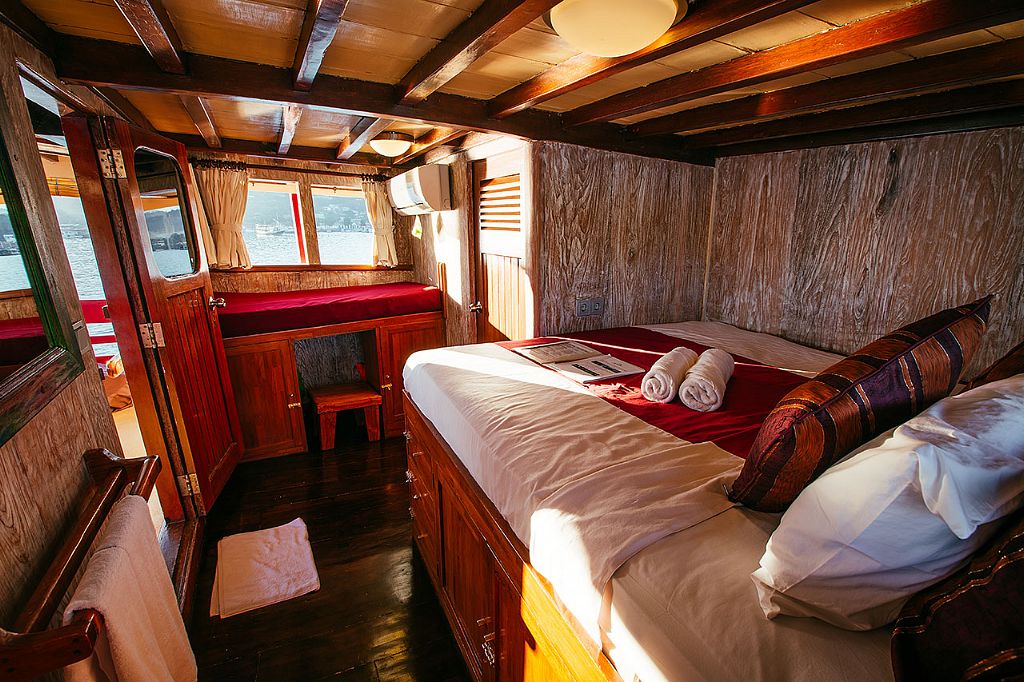
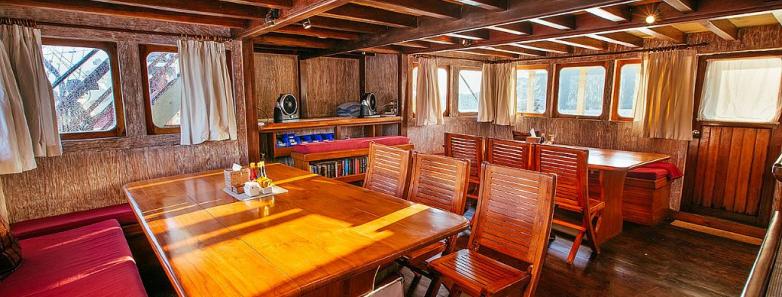
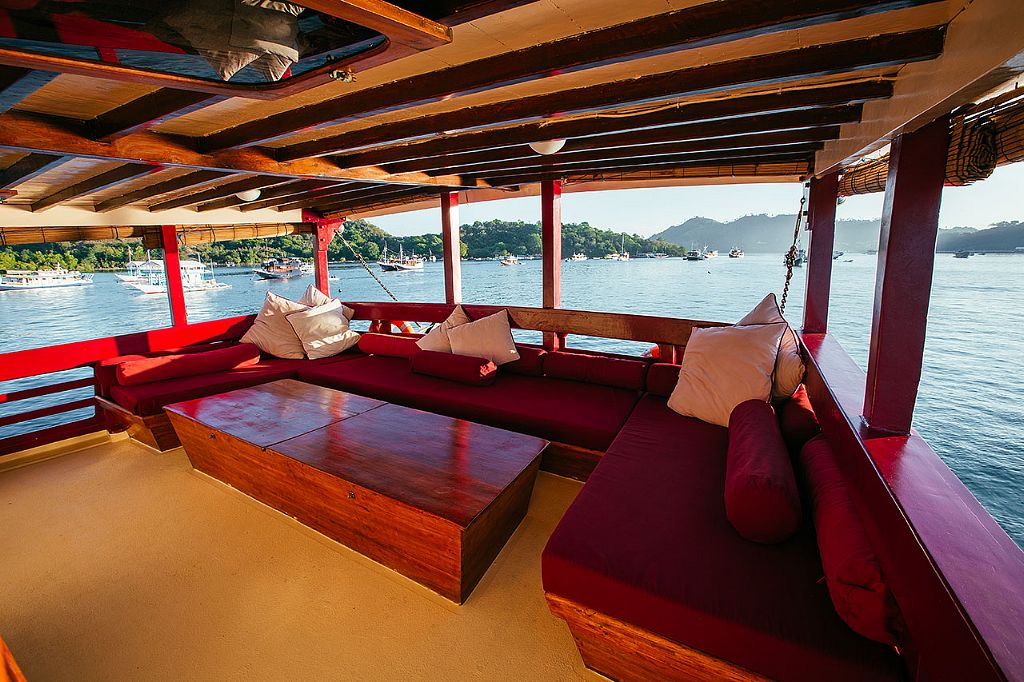
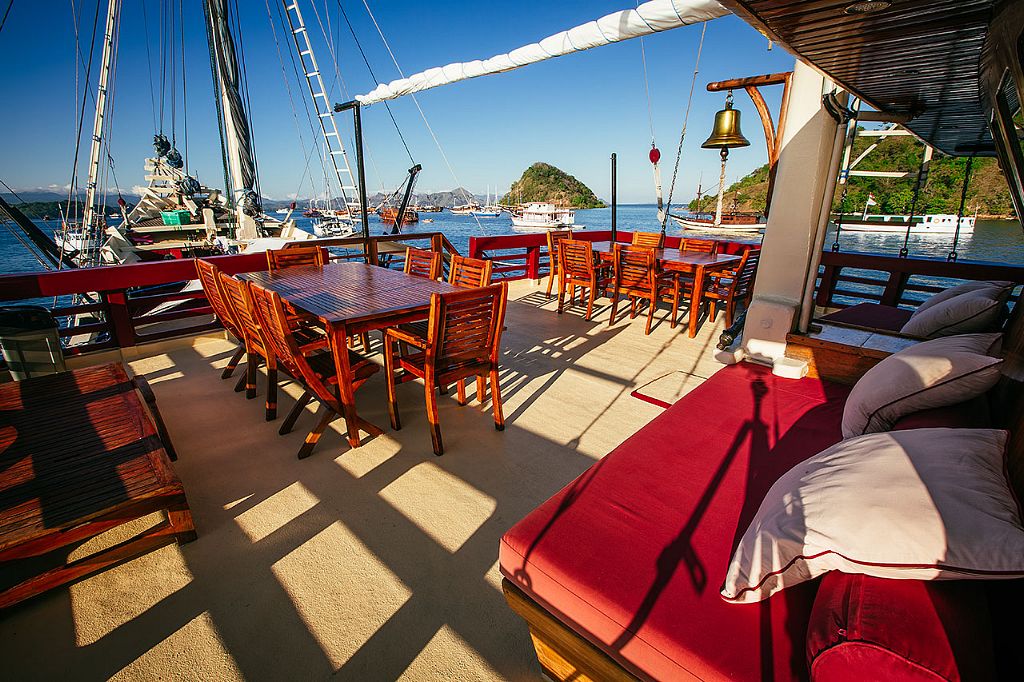
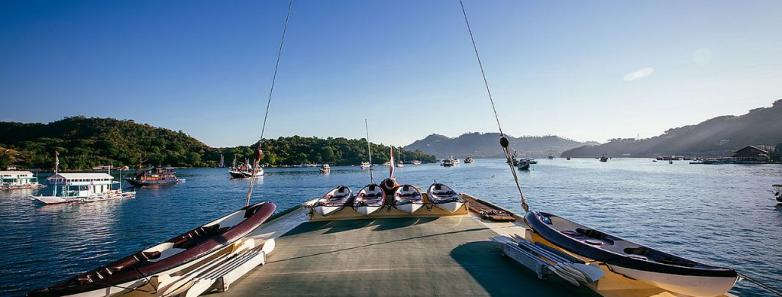
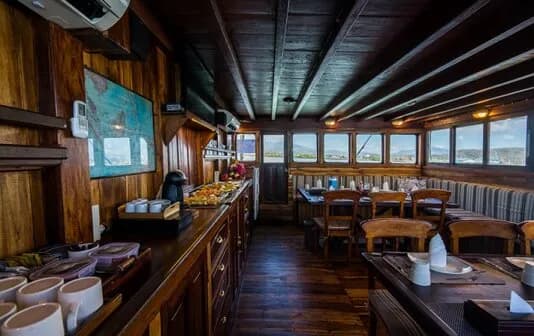
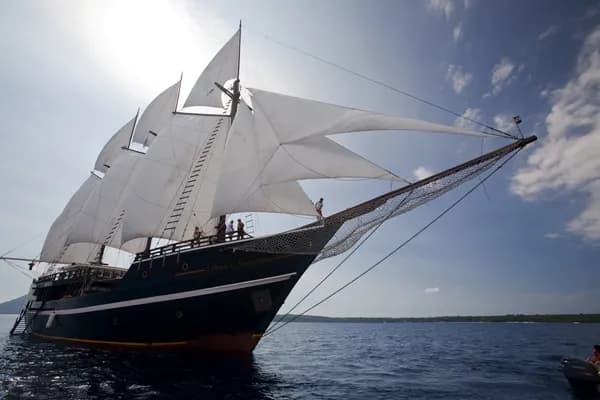
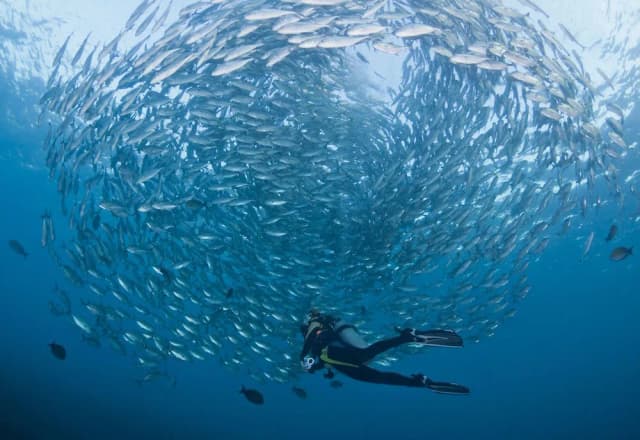
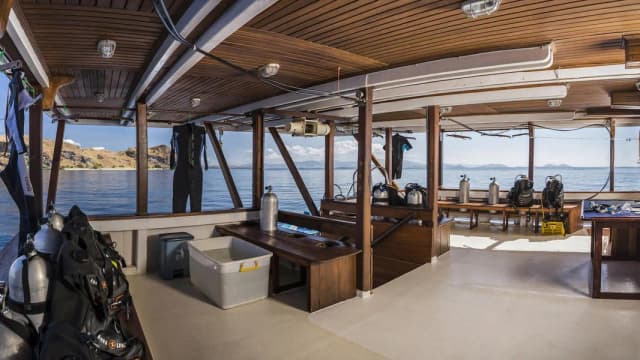
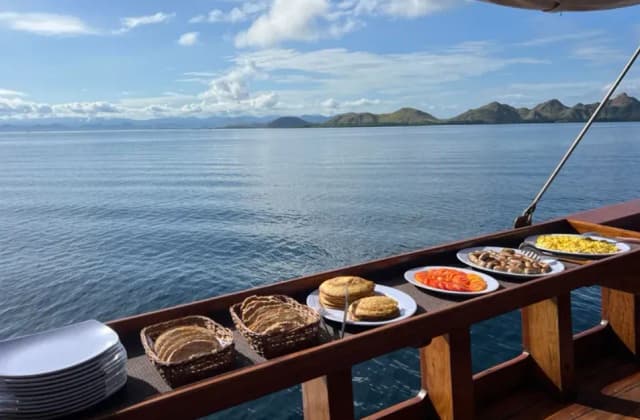
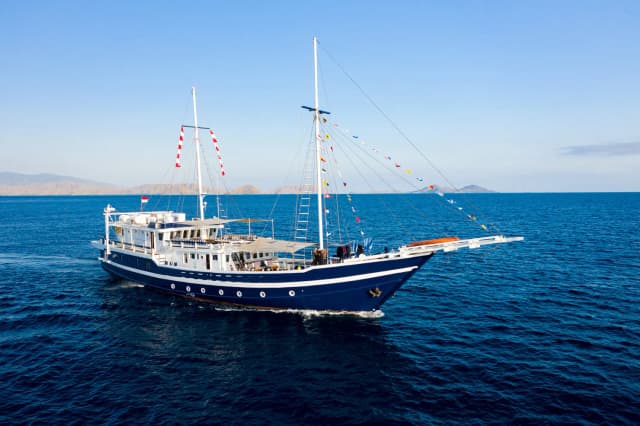
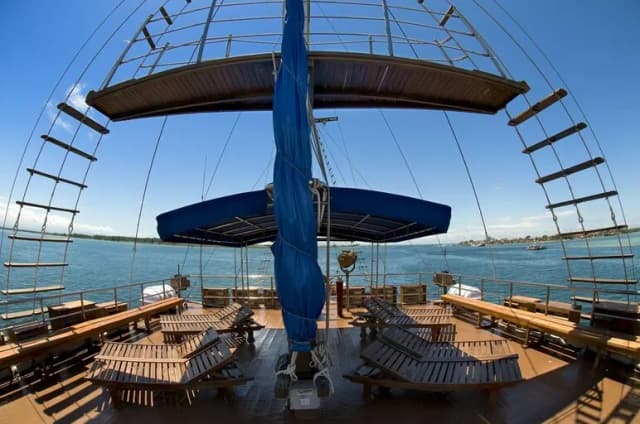
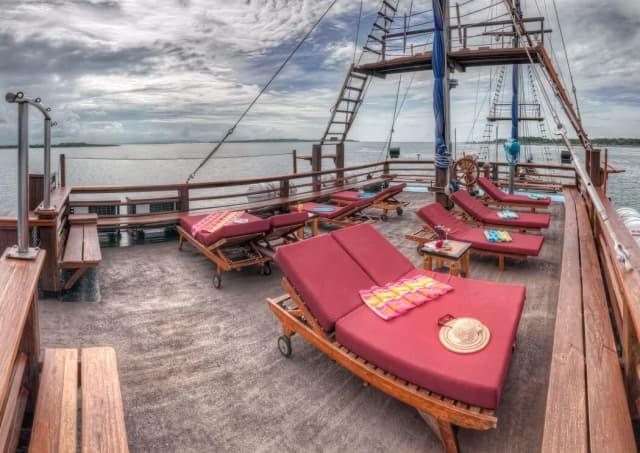
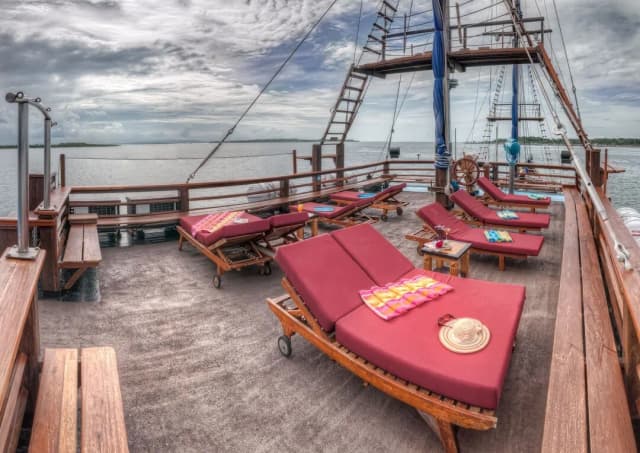
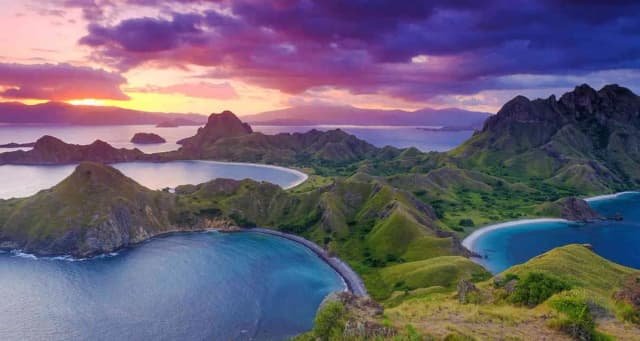
-optimized.webp&w=640&q=75)
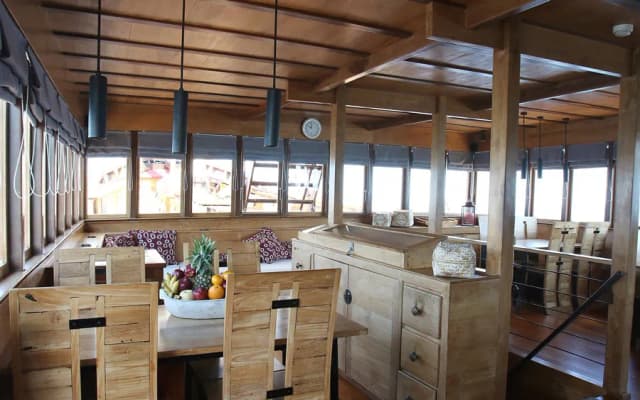
-optimized.webp&w=640&q=75)
